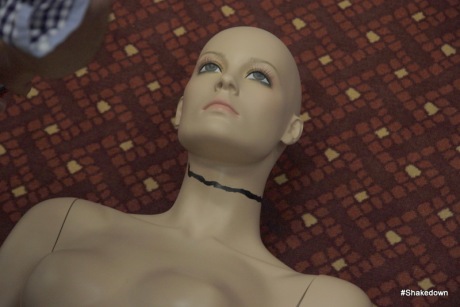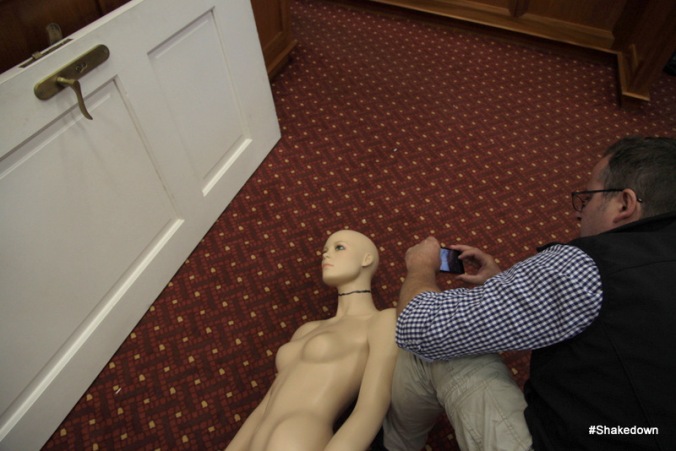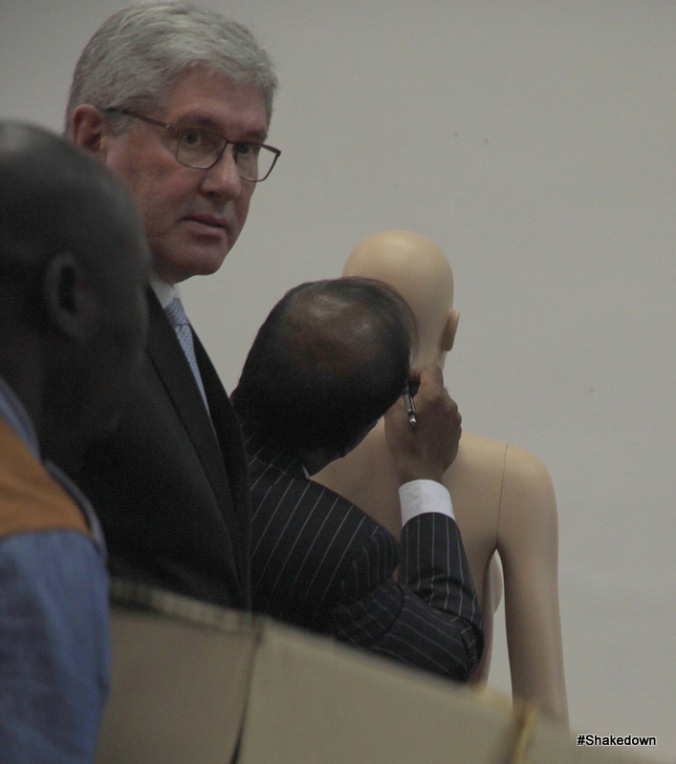The purpose of a court case is to get absolute clarity on evidence. The accused testifies, and then various witnesses, including experts, are ushered into court to corroborate or challenge a particular version. When all the evidence has been tested and studied to exhaustion, when everything that can be set out and clarified has been, then the court must decide on what really happened, and pronounce a verdict. Guilty, based on damning evidence, or not guilty, based either on evidence, doubt or a lack of evidence.
It’s the job of the Judge, prosecutor and defence advocate to be explicit in either making evidence absolutely clear or debunking it. Naturally there’s also an area, especially for the defence team, to murk certain issues in order to create doubt. An easy way to create doubt is to confuse or contradict a particular version, or simply to undermine it.
Van der Spuy did that by invoking the “whisky” narrative. That the officer drank whisky in the morning while taking a statement does undermine his integrity somewhat, although I’m not sure how it changes the schema of this case, or the crime scene. Brendan Miller is hardly a key witness, and it’s only because he’s testified that the whisky narrative even becomes relevant. If Miller didn’t testified, it wouldn’t have mattered what sergeant Appollis drank or didn’t drink when he took Miller’s statement.
Even so, it’s a point scored by Rhode’s defence team, and that’s a team in dire need of scoring points.
But I’d like to elucidate an area in which – I feel – everyone failed. The court failed. It occurred around the testimony Rohde’s colleague gave within hours of Susan’s death. I’ve provided a link below which opens at 9:30 into Brendan Miller’s very brief but very important testimony. The transcript is provided below the clip.
VAN DER SPUY: She [Susan] requested him [Miller’s eyes dart to Jason Rohde] to come with her as I understand it.
MILLER: Correct.
Miller sticks his tongue out very quickly as he answers this, then looks down. I don’t understand why the Judge and prosecutor didn’t challenge Miller on this aspect, or seek clarity on it. In Miller’s version, Susan arrives at his hotel room almost simultaneously with Jason, and then says his name repeatedly. But that’s not what Jason testified.
VAN DER SPUY: Are you able to comment on her [Susan’s]…condition?
MILLER: No…[speaking quietly]…she was calm, just said: “Jason…Jason…Jason…”
JUDGE: She was sorry- I didn’t hear that. She was what?
See, it’s precisely because Miller said this part quickly and under his breath that the Judge couldn’t hear him. Good for her, she interjects and asks him to clarify.
MILLER: She…just…repeated his name.
But that’s not what he said. He said:
SHE WAS CALM.
When Van Der Spuy asks the question, he uses a weird word to ask how Susan appeared: condition. It’s the word we might subconsciously associate with mental illness. The proper word to use in this instance is demeanor. Irrespective, Miller answers – he tells the court, he shares a crucial piece of information regarding the last impression other people have of Susan. Is she shouting, is she hysterical?
SHE WAS CALM.
Now, according to Jason, she’s wasn’t calm. She was shouting at him. She was also shouting in the hallway outside the room. So why not get clarity on this? Why not read to Miller Jason’s testimony and get Miller to confirm or contradict it.
What happens here is the Judge asks for clarity and on this vital point, something that slipped out in court is left out. It’s unfortunate the prosecutor didn’t assist the court in this. One wonders whether and how often the Judge might review the livefeed herself, and perhaps get a stronger sense of what she missed during the first go round. Sort of like the action replay and television refereeing in sports. That said, the whole point of the court process is to get the information there and then, that’s why everyone has gone to the trouble to be there – to field evidence, to examine it, to test it, but none of that can happen if it’s not heard, or misheard in the first place.
Now, Miller inadvertently confirms Jason’s version, that he sat on the bed beside Alterskye, because he could only “get up” to leave if he was sat down. Interestingly, in Miller’s version, he doesn’t explicitly mention that Jason and Jolene Alterskye are sitting together on the bed. Perhaps that’s because the murder accused is sitting directly opposite from the dock, and Miller is careful to avoid eye contact during his testimony with his former boss.
Miller is also adamant that he had no idea Jason and Jolene were having an affair, but later admits he was aware, at the conference, that Jason and Susan were patching things together, and that he shared an office with Jolene Alterskye. It seems a little odd. The boss is invited to a very late night nightcap by his colleague, and who is there, his mistress. Didn’t Miller know about it, and if Jason was patching things up, and Susan, was there, wasn’t it a really bad idea to have the drinking in the room setup setup in the first place?
It’s possible Miller had no choice in the matter – at that stage Jason was the boss, and both he and Jolene were Jason’s employees. Perhaps Jason had asked a few of them to set up the afterparty, and they simply did as they were told. Since Susan arrived on the scene in a bathrobe, one can assume Jason slipped out just as Susan was about to take a bath, or have a shower.
It’s unfortunate Miller wasn’t questioned on whether he noticed Susan’s hair, or their ends, were slightly wet or not. In any event, if Jason wished to escape the hotel room even for a few minutes, while Susan was in the bathroom was perhaps his best chance. When this tiny perk was denied him, did he do a nuclear flip?
Returning to the transcript:
VAN DER SPUY: And did he [Jason] say anything to her?
MILLER: No, he just got up and left.
VAN DER SPUY: You had offered him a drink, you said?
MILLER: Correct.
VAN DER SPUY: Did you pour him a drink; did he accept a drink?
MILLER: No, he left before I could pour.
This is quite ironic. Jason doesn’t have a drink, and thus leaves the hotel room sober and clear-headed. The policeman does have a drink, and thus leaves Miller’s home compromised, along with his statement.
The fact that Jason left the room as quickly as he did suggests Susan didn’t just say his name, but told him to return to their room. Would she have screamed at him, or, having come out of the bathroom almost the second she went him, and having followed Jason not to Alterskye’s room, but another room, all that was necessary was to show herself, and Jason knew the game was up.
At 11:23:35 the previous morning, Susan had WhatsApped Jason her unambiguous feelings:
“You are a devious f***ing bastard!!!!!”
VAN DER SPUY: Once they left, what happened then?
MILLER: Then…[glances down]…they-they-they left and…I think Farrow looked outside the door to see if they were still outside, or if they’d left [sticks tongue out, glances quickly at Jason]…that they were not there. And [shake head] we just carried on chatting.





I’m not sure what the sucking in of the lips means, but it seems to be associated with someone wanting information and a sort of facial shrug, as if to say, “Sorry, can’t help you.” [But maybe I’m not so sorry.]
VAN DER SPUY: Um…how would you describe the atmosphere?
MILLER: A little bit tense…um…everyone was just very quiet.
But that’s not how Jason described it. Jason described it as “very, very” tense, and besides that “awkward” and “embarrassing”.
The “intensity” of the day prior to her death, and the last time others saw her alive, is another vital area to get to grips with. Exactly how intense was it? Why would it be tense? One reason is Susan arriving at a room where everyone is dressed, and everyone is an employee of her husband’s, ought to provide some depth to this sense, but then flesh it out.
The texts between Jason, Susan and Jolene also provide crucial insight into just how fraught the situation was between them. I also believe Jason selectively deleted some messages sent by his wife, and some of his own, leaving behind a slightly distorted picture.

Van der Spuy asks whether anyone opened the door to check whether Jason and Susan were there. Miller’s not sure. Strange. He’s just said “I think she looked out the door”.
VAN DER SPUY: Did you do anything after that?
MILLER: No, a little while later…after they left…I sent…um…Mr Rohde an SMS to ask if he was okay.
During the later half of this sentence, someone coughs loudly so it’s hard to make out what Miller said, or who coughed.
VAN DER SPUY: Okay, you sent him an SMS. What did you say in the SMS?
MILLER: I [looks down]…I think I said ‘all okay?’ or ‘are you okay’?
VAN DER SPUY: Right. Did you get a reply?
MILLER: The next morning, after seven.
VAN DER SPUY: I think it’s common cause that you got a reply. Can you remember what he said in the reply.
MILLER [Glances at the prosecutor]: Drama [shakes head], but okay.
I haven’t been able to establish exactly when Miller sent his message to Jason, but it was clearly around 02:00 or 03:00. I haven’t been able to establish when Jason responded, other than that it was roughly after 07:00. Again, it’s frustrating that the Judge and prosecutor can’t nail down these absolutely crucial details.
This is why. Let’s engage a in a brief thought experiment. In Version 1, Jason heads to his room like a good boy, he tells Susan he wants to get a divorce when they go back to Joburg, both sleep soundly and then the next morning, around the time Susan is killing herself, he texts Miller:
Drama, but okay.
In Version 2, Jason heads to his room like a bad boy, and he decides to get a divorce from Susan then and there. He’s been embarrassed in public by her for the last time. The texts sent between the two suggest [from Susan] that only hours earlier Jason had threatened Susan in some way.

All those exclamation marks suggest it was a threat way beyond “I’m going to divorce you”. Prior to that text, almost ninety minutes prior in fact, is another text where Susan is already clear that they’re getting divorced.

Jason’s response then, if anything, is to calm her down, walk her back on the idea of divorce. He’s certainly not confirming or reinforcing the statement. Later he tells her to pack her bags, but it’s still not about divorce. I think one reason for this may be because their home in Johannesburg [worth over $10 million] was in Susan’s name. If he divorced Susan he might lose a sizable asset.
It’s also worth noting Miller’s own body language when he testifies “drama” [shakes his head] but okay.
In Version 2 there’s the possibility that while Jason’s blood was up, he acted on his feelings, and took them out on Susan. While doing so, Miller sent him a message. Jason only answered this message several hours later. Either Jason was busy murdering Susan when this message was sent [which is why when it was sent matters], or he was asleep.
If Jason was murdering Susan while the message arrived on his phone, and if there was a lot of frantic staging and covering up afterwards, including deleting messages off her and his phone [I explained how he could do this in another blog post] and even Alterskye’s phone, then we can understand how, once it was all done, he might say:
DRAMA, BUT OK
In other words, what were the chances Jason sent that message after Susan was dead, and thought of her murder as drama, but also okay.
The alternative is that Jason’s version is true. The couple argued, even exchanged blows, Jason then went to sleep, got up, cleaned himself up, and then – unbeknownst to him Susan had committed suicide hours after their argument [not in the heat of the moment] – and Jason understood the whole situation as drama, but okay.
But it wasn’t okay, Susan was dead.
In Version 2, we can see how Jason knowing Susan was dead could be “okay” now. It was done, but everything was prepared, and from now on things would be better. Or okay. In Version 1, which is Jason’s version, there was just drama, even though he’d told his wife they were definitely getting divorced. If that was the case, why would things be “okay”? Why not say, “not great”, or “Susan’s very upset about last night” and we’re getting a divorce?
How could things be okay?
Miller’s testimony is doubtful because in the same breath that he says Jason [and Jason and Susan] were A little bit tense…um…everyone was just very quiet he’s also concerned enough to send a very late night message. We don’t know exactly when it was, but probably close to 03:00. Miller had to be fairly familiar with Jason to do this, and risk waking him up.
A little bit tense
everyone was just very quiet
DRAMA, BUT OK







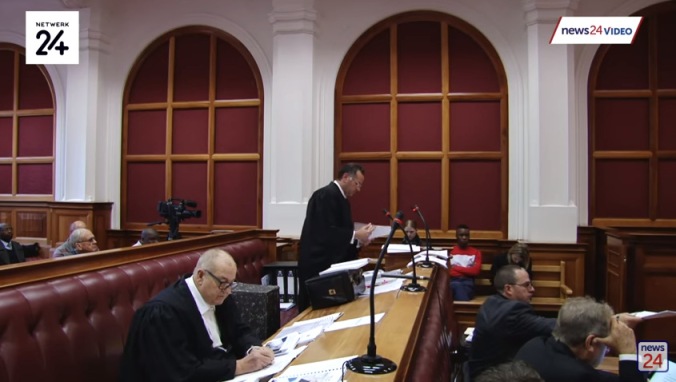







 In this case we’re sure about the cause of death [asphixia], but we still have two hypotheses competing for the manner of death. Either Susan strangled herself, or her husband strangled her. It’s important to remind ourselves that even suicide involves the same scenario as murder – there’s a murder weapon, a motive and an opportunity. It’s still murder, it’s just murder of the self.
In this case we’re sure about the cause of death [asphixia], but we still have two hypotheses competing for the manner of death. Either Susan strangled herself, or her husband strangled her. It’s important to remind ourselves that even suicide involves the same scenario as murder – there’s a murder weapon, a motive and an opportunity. It’s still murder, it’s just murder of the self.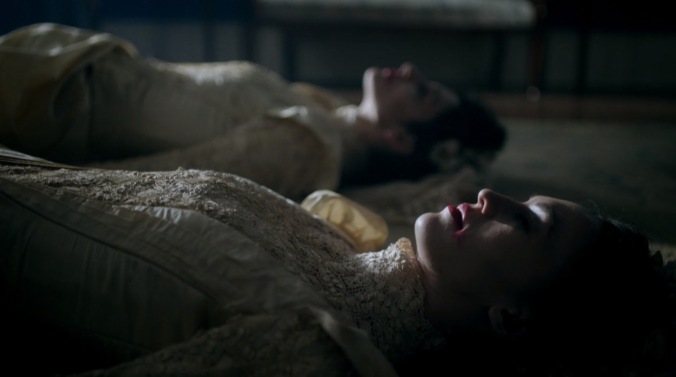

 At 10:00 on Tuesday, June 19th, Jason Rohde’s version of events faces its sternest test.* Dr. Perumal, who performed the second autopsy on August 1st, 2016 in Johannesburg, a week after Susan’s death, will face a barrage of cross-examination from advocate Louis van Niekerk. I have a question of my own.
At 10:00 on Tuesday, June 19th, Jason Rohde’s version of events faces its sternest test.* Dr. Perumal, who performed the second autopsy on August 1st, 2016 in Johannesburg, a week after Susan’s death, will face a barrage of cross-examination from advocate Louis van Niekerk. I have a question of my own.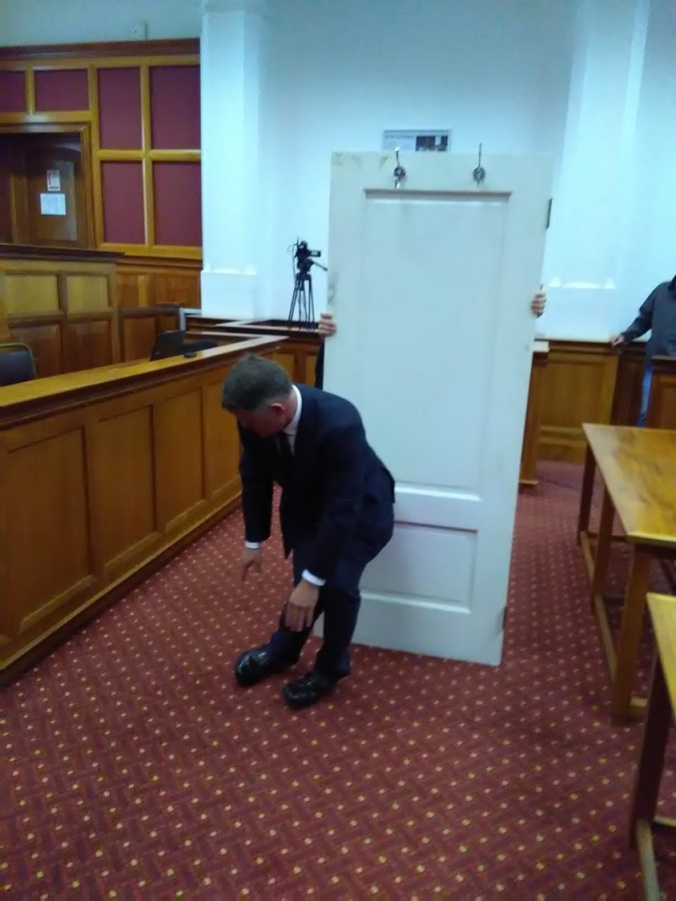
















































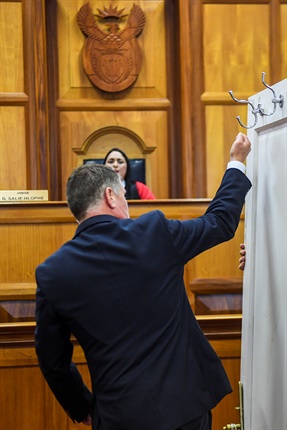






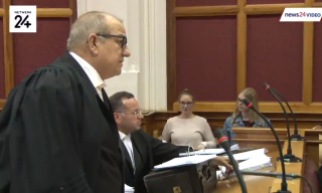









 There’s a lot to say about Day 45. It was quite a traumatic day for me, in the sense that I was exposed – very quickly and intensely – to the defence exhibit autopsy photos [during the adjournment].
There’s a lot to say about Day 45. It was quite a traumatic day for me, in the sense that I was exposed – very quickly and intensely – to the defence exhibit autopsy photos [during the adjournment].